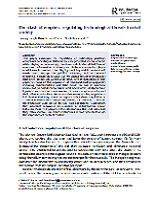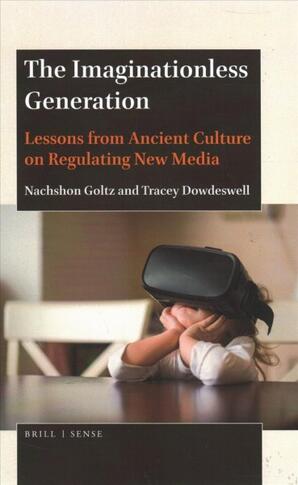Goltz, Nachshon
Person Preferred Name
Nachshon Goltz
Related Works
Content type
Digital Document
Abstract
This paper examines the regulation of technology platform companies providing a platform for user-generated media content while playing an increasingly dominant role in the global flow of news and information. In doing so, platform companies play a crucial role in modern civic life, by deciding which content will reach users, engage the public's attention, and be deemed credible. It is therefore crucial that we choose means of regulation that foster democratic values and robust civic engagement. In this paper we focus on the regulation of ‘computational propaganda', including misinformation and ‘fake news', the rise of synthetic media and so-called ‘deep fakes', and novel forms of algorithmic injustice, such as the manipulation of search engine results and their effect on elections. We argue that many existing regulations fall short in that they adopt an approach that views regulation as a battle between two competing powers, or ‘empires’ – that of the regulatory state versus the big tech companies. Accordingly, they approach regulation as a means of redistributing power between these two players, while discounting the end user, and they often involve unjustified restrictions of free speech through the imposition of content controls.
Origin Information
Content type
Digital Document
Abstract
"In this chapter, we offer a critique of the growing use of virtual worlds for children, particularly as tools to teach children the basic elements of storytelling: language, narrative, the creative imagination, and generativity in applying learned skills. We argue that virtual storytelling is not like other forms of storytelling, particularly for children, who are still developing these abilities. There is evidence that digital storytelling through virtual worlds lacks many of the positive aspects of non-digital storytelling, and may even inhibit the development of imagination in children. In this chapter, we review the literature on children and virtual worlds, focusing on the importance and development of the creative imagination in children. We discuss the visualization hypothesis – a theory that was developed to explain how television produces a reductive effect on the imagination because it presents the user with ready-made visual images – and generalize it to new media, including virtual worlds. We posit the ‘displacement hypothesis’, which states that when manufactured content is supplied ready-made to the individual, then it displaces the creative and imaginative processes that the individual would otherwise supply for him or herself. The more immersive the medium, the more psychological dimensions are captured by this displacement – such as sound, the visual, narrative content, time, space, physical presence – the more reductive are the effects on the individual’s imagination. We conclude that further research is needed in order to determine the long-term effects of virtual worlds on child development, and that in the meantime virtual worlds are an inappropriate medium for children’s storytelling." --From publisher description.
Origin Information
Content type
Digital Document
Abstract
In the present-day Tower of Babylon--the all-encompassing virtual world built of image layered upon image--children are the most vulnerable users. If we permit them unfettered access to media that promotes corporate and consumer values, while suppressing their cognitive development and creative imagination, then an ‘imaginationless generation’ may be our grim and inevitable future. This book takes the reader, whether an academic, a parent or an educator, through a startling journey from the harms lurking in the virtual worlds--to children’s health and well-being, to how they deal with representations of violence and sexuality, as well as exposure to cyberbullying, advertising, Internet Addiction Disorder, and even exploitation. The most dangerous harm is unseen, and affects the innermost realm of a child’s psyche: the imagination. The authors discuss the current global regulatory framework that makes the protection of children ever more challenging. They discuss lessons learned from the ways that courts have negotiated free speech issues, as well as the research on parental mediation of children’s Internet use in the home. Finally, they move towards a bold new attempt at understanding regulation, by drawing lessons for new media from ancient culture. From publisher description.
Origin Information



